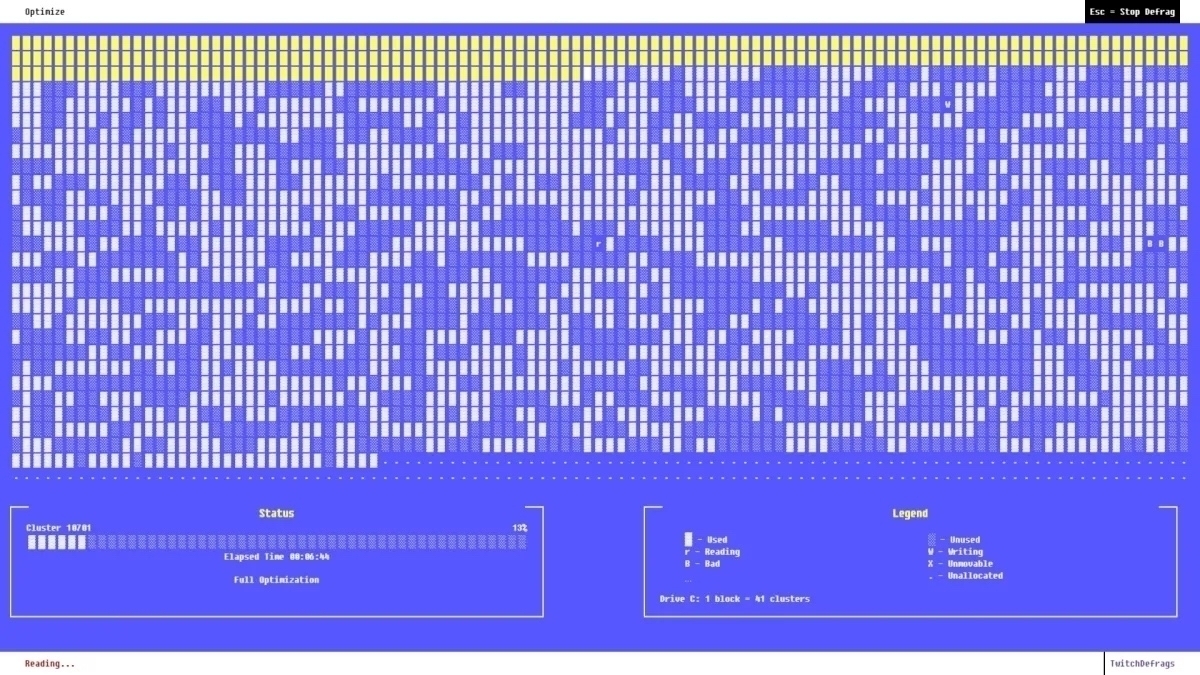A love letter to defrag.exe
Scott sent me this cute Thread by Calm and I remarked that defragging my computer ‘back in the day’ was one of my favourite tasks.
I loved running defrag.exe on DOS and then Windows as often as possible.
It was one part “I’m doing God’s work,” one part “this will totally speed the computer up,” even though it only slightly affected performance, one part “looking under the hood,” which is an element of computing I dearly miss today, and one part just sitting there for an hour watching the defragger defrag.
A file, say your homework – homework.doc – might have been saved in position 1045 on the spinning hard disk. However, it might have needed 10 positions, but only positions 1045 to 1050 were free, so the last five parts would be placed later on the disk where there was free space. Then, if you wanted to access that document, the disk would be spinning back and forth between the two different positions on the disk.
Defragmenting would bring all the bits together by moving other bits out of the way.
Watching the defragger run you built such an intimate relationship with your file system, operating system, documents, applications (we called them programs at the time), files, games, etc.
In some defragmentation apps, they would show you which file it was working on at that time, and if you were nerdy enough, you’d come to know all the files, even operating system files. When you only had 100 or a few hundred megabytes on a disk, you’d have to sacrifice things like help files, unneeded applications or operating system features, or Minesweeper if you wanted to install a new program or game.
It really was a beautiful time to use a computer.
Miss you, defrag.exe.
